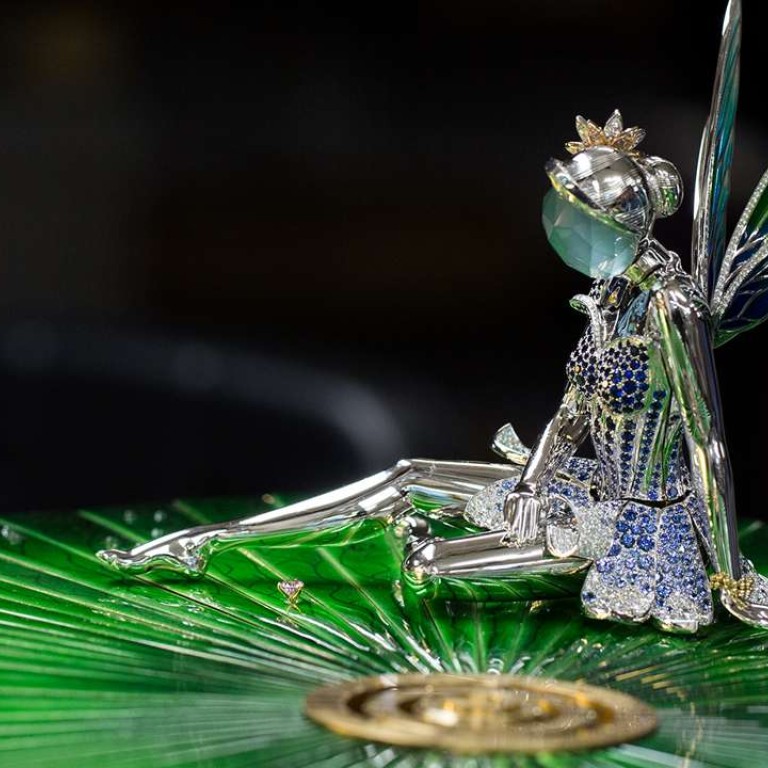Van Cleef & Arpels works its magic with the Automate Fee Ondine Extraordinary Object at SIHH 2017

The new Lady Arpels Papillon Automate watch is inspired by the poetic clock
You can always expect a hint of magic at maison Van Cleef & Arpels – delicate fairies, stellar constellations and fluttering butterflies.
At this year’s SIHH, Van Cleef & Arpels raised its poetic complications to a new level with the Automate Fee Ondine Extraordinary Object.
The magnificent clock – featuring an automaton mechanism of a fairy admiring a water lily blossom – took eight years of planning and brought together artisans from about 20 ateliers in France and Switzerland to work on it.
“The idea of poetic complications was really how to tell a story with mechanical movement,” says Nicolas Bos, CEO of Van Cleef & Arpels. “We thought it was also interesting to work on a larger scale to see if we can develop full-scale automaton using the same inspiration to create more detailed and complex animations.”
Bos reached out to famous automaton maker François Junod, based in Sainte-Croix in Switzerland, for the 50-second animation which starts with a rippling water lily leaf, followed by the blossoming of a water lily and the fairy’s awakening.
A tremendous amount of work goes into the creation. The fairy’s translucent wings, for example, were rendered with plique-à-jour enamelling to create different shades of blue.
We wanted to capture nature’s whimsy as much as possible. The more the wearer moves, the more active the butterfly is going to be
The three-dimensional masterpiece, though not for sale, has inspired the design of the new Lady Arpels Papillon Automate watch.

“Now you can see the butterfly starting to flap its wings in the watch on a vertical level.”
The sophisticated automaton depicts the random fluttering of a butterfly inside the watch’s slightly domed glass. The frequency of the movement of the butterfly is associated with the power reserve of the watch – the butterfly beats its wings one to four times in a row, depending on the power reserve.
“We wanted to capture nature’s whimsy as much as possible,” Bos says. “The more the wearer moves, the more active the butterfly is going to be.”